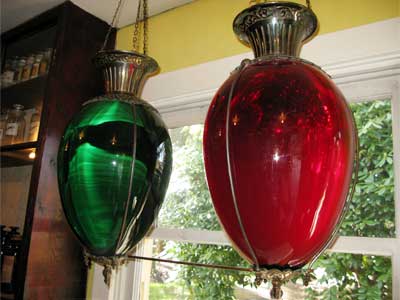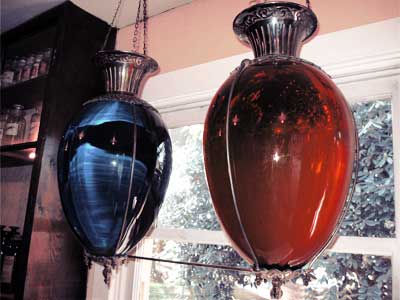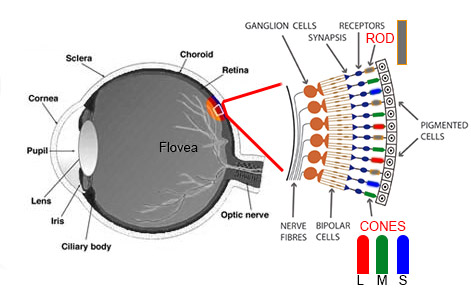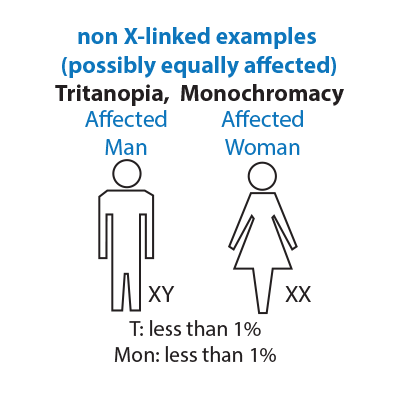Tritanopia


Tritanopia is a rare form of colour blindness in which a person's eyes are unable to receive the blue light part of the colour spectrum. If a person can still see some blue light then it is considered only a weakness known as Tritanomaly.
Listen to how the word sounds:
How does this happen?

Side view of the eye and close up of rods and cones
In order to view colour the eye has special receptors called rods and cones. As we can see in this diagram, when a person has Tritanopia they are lacking the short-wavelength sensitive retinal cones (S-cones). The brightness of blue, indigo and a spectral violet is much reduced. Some of these colors become even as black. Yellow is indistinguishable from white, and purple colors are perceived as various shades of red. A person with normal vision can distinguish 7 hues while a person who has Tritanopia may only be able to distinguish 2 or 3 hues.
Who can have Tritanopia?

Because these rare forms of colour blindness are likely not sex-linked both Male and Female have the equal possiblity of being affected.
Unlike Deuteranopia or Protanopia, Tritanopia is not sex -linked, or not passed on through the X-chromosome. However, its defects are autosomal and hereditary and encoded on chromosome 7. Therefore women and men have the potential to be equally affected. It is also a disease that can be acquired during one’s lifetime. Though if acquired it is possible that it can be reversed. Acquired Tritanopia can happen in the following ways:
- hard hit on your head
- eye aging
- consuming alcohol
- use of some organic solvents
Tritanopia is a rare type of colourblindness. About 1% of males have Tritanopia or a form of Tritanomaly and for females it is about 0.01%.
What are the colour-related hazards?
While people with Tritanopia may have less difficulty with colour tasks than other people with colour blindness there are still dangers. Red and Green are not as great a concern but seeing yellow or when darker colours appear almost black can be an issue. How many road signs can you think of that have blue or amber?
